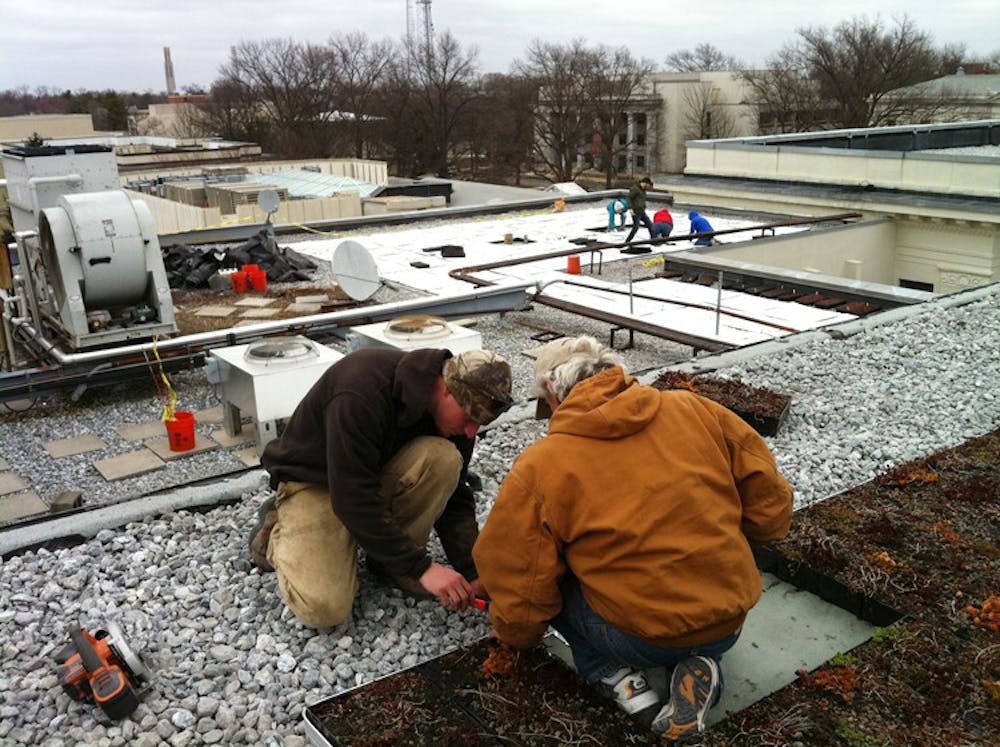Green roofs are being installed on four roofs on the Mary Graydon Center and the entire upper roof of the Ward Circle Building, according to Chris O’Brien, director of Sustainability.
Four other AU buildings have green roofs: the Media Production Center, the Katzen Arts Center, the School of International Service and the Kogod School of Business, according to O’Brien.
Mary Graydon and Ward were also chosen to receive the latest green roofs because of their durability and size, which reduces the cost of the projects per square foot, O’Brien said.
“The existing roof structure is new enough that we can add this new layer of living material without worrying about replacing the roof any time soon,” he said. “If it was being replaced, we’d have to replace the vegetative material as well … it wouldn’t make any sense.”
The installation began March 5 with a kick-off event hosted by the D.C. Green Building Council’s National Capital Region Chapter and DC Greenworks.
The roofing will continue through Earth Week, April 17 to April 23. The AU community will have the opportunity to help plant on and complete the roofs during Earth Week.
Community Service Coalition Director Stephen Bronskill estimated 50 students and staff volunteered over the course of spring break to clear the roofs and plant vegetation.
“It’s a unique and cool idea, especially in cities where there’s not a lot of green space,” said Freshman Tyler Sadonis who helped out with the effort.
Living roofs, which include grass, flowers and plants, have a variety of benefits, according to O’Brien. Green roofs in the area mainly help protect the Chesapeake Bay Watershed by slowing polluted stormwater from running into Rock Creek and then the bay. They also make buildings more energy-efficient and create habitats for animals.
The green spaces on the MGC roofs will provide personal benefits as well, by being visible from offices, classrooms and conference rooms in the building. O’Brien said studies have shown that people’s productivity and well-being increase when they have a view of nature from their window.
Green roof materials are relatively inexpensive, costing around $15 per square foot or $165,000 overall, before subtracting financial incentives.
“It’s small steps, but it’s something,” Bronskill said. “It’s really cool that AU has decided to invest in this.”
The roofing projects have both short and long-term financial incentives, since adding a green roof can help extend the existing roof’s life, according to O’Brien.
“A roof that might have lasted 30 years will now last 50 years,” O’Brien said. “We expect the projects to pay for themselves over time.”
AU contracts its green roofing work through DC Greenworks, a non-profit organization that buys and installs sustainable materials.
At more than 11,000 square feet, the projects on MGC and Ward are the largest DC Greenworks will have ever completed, according to the U.S. Green Building Council.
rkaras@theeagleonline.com





